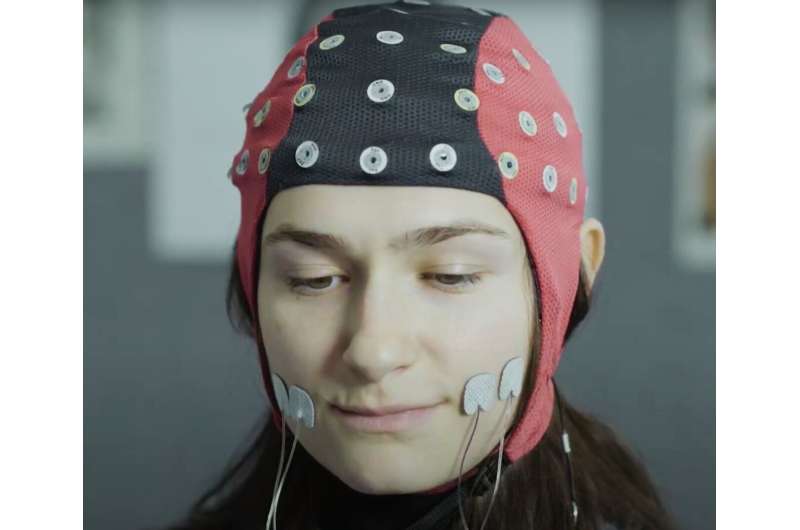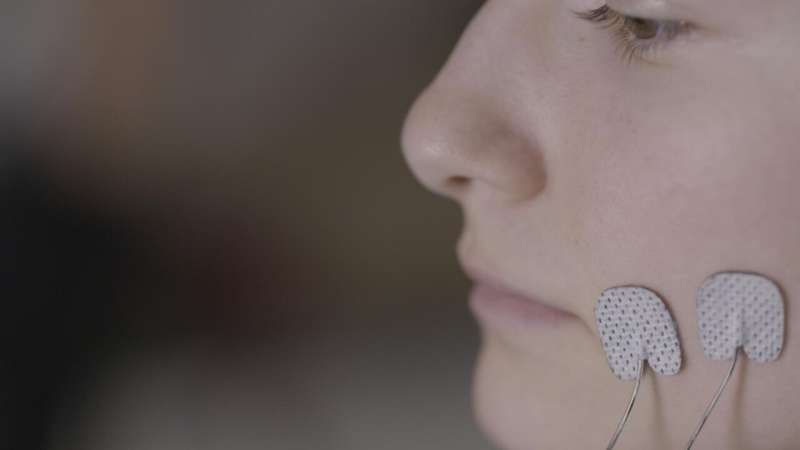This article has been reviewed according to Science X's editorial process and policies. Editors have highlighted the following attributes while ensuring the content's credibility:
fact-checked
trusted source
proofread
Smiling is the secret to seeing happiness, electrical stimulation experiment reveals

Smiling for just a split second makes people more likely to see happiness in expressionless faces, new University of Essex research has revealed.
The study led by Dr. Sebastian Korb from the Department of Psychology shows that even a brief weak grin makes faces appear more joyful. The pioneering experiment used electrical stimulation to spark smiles and was inspired by photographs made famous by Charles Darwin. A painless current manipulated muscles momentarily into action—creating a short, uncontrollable smile.
This is the first time facial electrical stimulation has been shown to affect emotional perception.
Dr. Korb hopes the research can explore potential treatments for depression or disorders that affect expression, like Parkinson's and autism. He said, "The finding that a controlled, brief, and weak activation of facial muscles can literally create the illusion of happiness in an otherwise neutral or even slightly sad-looking face is ground-breaking."
"It is relevant for theoretical debates about the role of facial feedback in emotion perception and has potential for future clinical applications."
Dr. Korb used a modernized version of a technique first developed in the 19th century by the French physician Duchenne de Boulogne. Darwin published drawings of Duchenne's work in "The Expression of the Emotions in Man and Animals"—his third major work on evolution.
However, the voltage was dialed down for the new experiments to ensure the safety of participants and better control the smiles. By using computers, the team was able to control the onset of smiles with millisecond precision.
In total, 47 people took part in the Essex study, which was published in Social Cognitive and Affective Neuroscience.
They were shown digital avatars and asked to assess whether they looked happy or sad. In half the trials, smiling muscles were activated at the onset of the face. It emerged that producing a weak smile for 500 milliseconds was enough to induce the perception of happiness.

Dr. Korb says the results help us understand facial feedback, and he hopes to expand the study. He said, "We are currently conducting more al research to explore the phenomenon in healthy participants further."
"In the future, however, we hope to apply this technique to explore facial emotion recognition for people with conditions like Parkinson's, who are known to have reduced spontaneous facial mimicry and impaired facial emotion recognition."
"Moreover, we have published guidelines to allow other researchers to start using electrical facial muscle stimulation safely."
More information: Themis Nikolas Efthimiou et al, Zygomaticus activation through facial neuromuscular electrical stimulation (fNMES) induces happiness perception in ambiguous facial expressions and affects neural correlates of face processing, Social Cognitive and Affective Neuroscience (2024). DOI: 10.1093/scan/nsae013




















